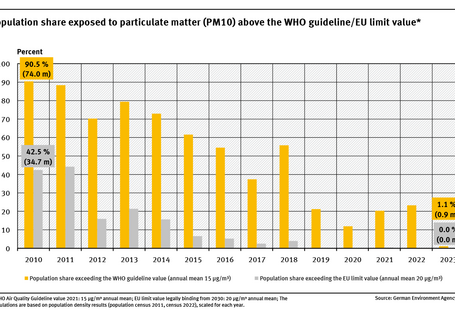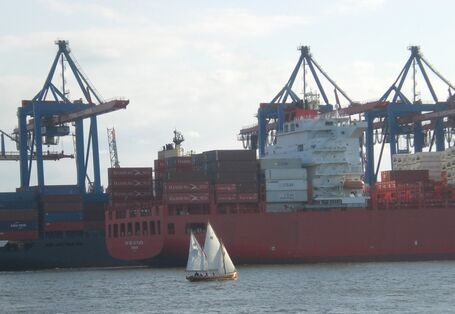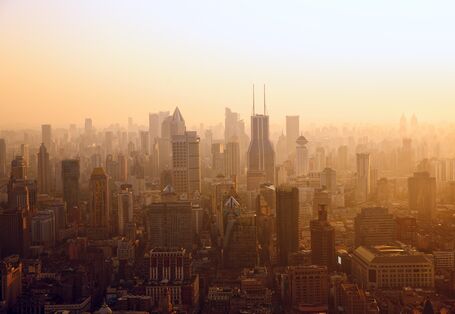Indicator: Population-weighted particulate matter exposure (PM10)



More and larger ships are sailing the world's oceans. Due to their high tonnages, ocean-going vessels can be a comparably environment-friendly means of transport. There is still considerable potential to design and construct them in such a way that they pollute the environment less. Proposals need to be developed and implemented at all levels of maritime policy..

The composition of the air is affected by humans. Many components of the air are, above a certain concentration, a threat to humans and animals and affect plants, water bodies, soils and even buildings and materials.
How are the German Environment Agency's maps of Germany's current air pollution and ozone concentration forecasts drawn up? We explain here in brief.

Smoke from house chimneys can lead to unpleasant odours in the neighbourhood and be harmful to health.

Exceptional exposure situations deserve special consideration. They occur when usual or expected environmental conditions are not met. Human health is particularly at risk in these often extreme stressful situations, therefore environmental hygiene and environmental medicine take up a position on such topics.